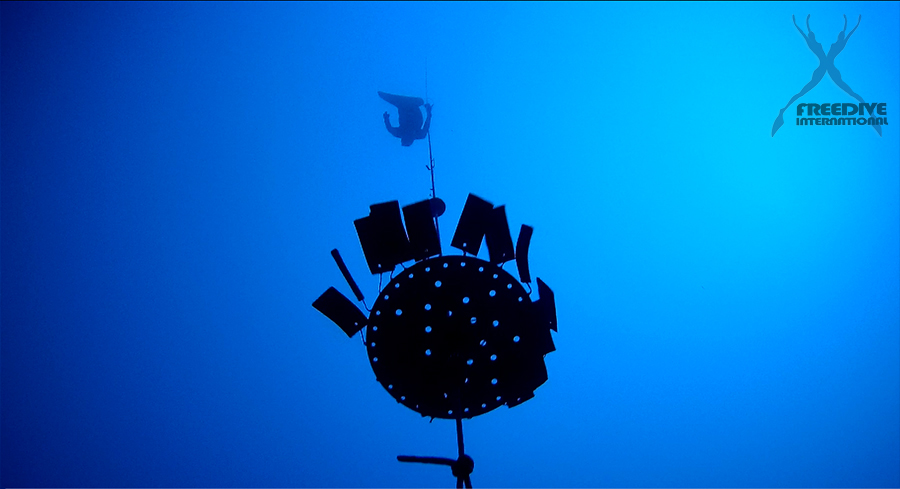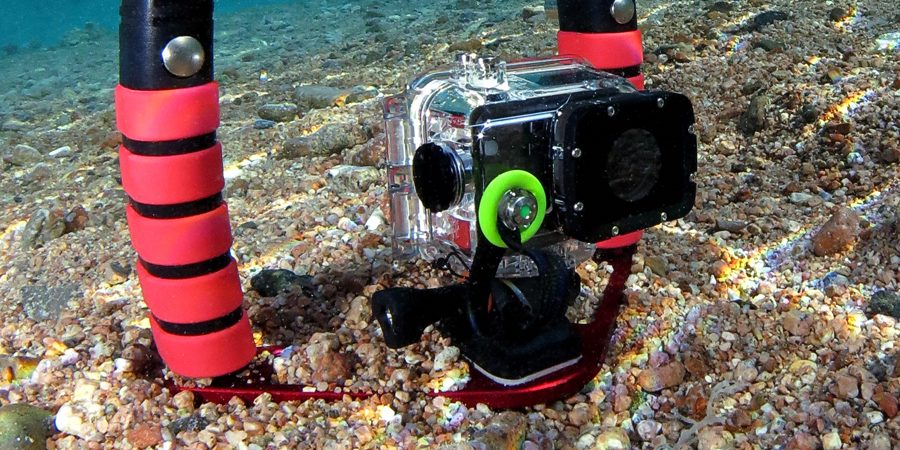At Freedive Dahab we have been using Rollei actioncams for our freediving activities. These are small cameras with great design, high performance and resolution; however the price is much lower when compared to other actioncams with the same specs, and the accessories are extremely affordable.
The most important thing for us is that the housings are rated to 100m, and the good news is this housing comes with the standard package and we don’t have to pay extra for it.
Why the depth is so important is because we need to use these cameras as “bottom cameras” for our competitions, which means we attach them to an arm which is placed below the bottom weight of the competition rope, and the camera is continuously recording for a few hours while pointing 45 degrees up, so to catch the last part of the freediver’s descent and the moment when they take the tag from the bottom plate. We also need to check that they dont pull the rope outside of the 2 meters grace zone. For this reason having a camera with a wider angle is important; but it is also important that the quality of the footage is such that it is possible to see details of the turn and pull, and that details are maintained at depth, where the light is less and cameras of a lesser quality produce footage with too much noise.

This is a screen grab taken from 104 meters depth, during a world record attempt to 102 meter by swedish freediver Annelie Pompe, filmed with a Rollei S6 camera.
Because the camera needs to film for hours we are using a battery pack, which is installed instead of the LCD screen and boosts the life battery significantly.
Filming freediving competitions used to be a very costly business, since until just a few years ago regular cameras had poor quality video, and regular video cameras were quite expensive; to this you needed to add a housing, and not just any housing; it had to be rated for 100+ meter, which brought the price to astronomical levels. We used to break out in cold sweats when we had to set up a deep camera, and this had to be done several times as the battery life used to be much shorter; so about every 40 minutes we had to pull up the camera, open it, replace batteries, close it and drop it down again, each time risking flooding it as all this was done in great rush.
Here below a short clip filmed with a ROllei S6 during our last competition: a freediver’s turn at the bottom plate, placed at 50 meters depth.
The new Rollei actioncams are so much simpler to operate and handle, and don’t require o-ring maintenance (and hardly any maintenance at all). This in addition to the high quality footage, the battery pack option and its superior depth rated housing make these cameras an amazing tool for our profession.

There are companies such as Ikelite which produce great extra accessories for action cams, such as trays with handles and small but powerful torches to give near professional videos in terms of lighting and stability.
But their use is not limited to deep competition freediving! if you look inside the dive bag of nearly every freediver you will find an actioncam in addition to his freediving equipment. Most of our students bring their action cam during every training session.
The applications are many: filming and taking photos of themselves and their buddies during recreational freediving; but since these cameras are so small they can be brought along also during a training session just in case some cool marine creature swim along, and clipped to the side of the buoy when not in use; most importantly they are an extremely helpful tool for evaluating technique, as visual feedback is much more effective than verbal feedback only: streamlining, finning, body position and most other freediving techniques can be filmed and analyzed post-session allowing a much steeper learning curve than with the old style verbal feedback. This is made especially easy with the newer Rollei models thanks to the wireless connection to an external device. We carry around a tablet with our Rollei just for this purpose.
We are very thankful to Rollei for sponsoring the 2015 edition of Triple Depth competition, with 2 Rollei S6 as prizes , and with an extra Rollei that we will use as camera for the surface footage, so that our freediving competitions from now can be filmed fully with Rollei cams.








